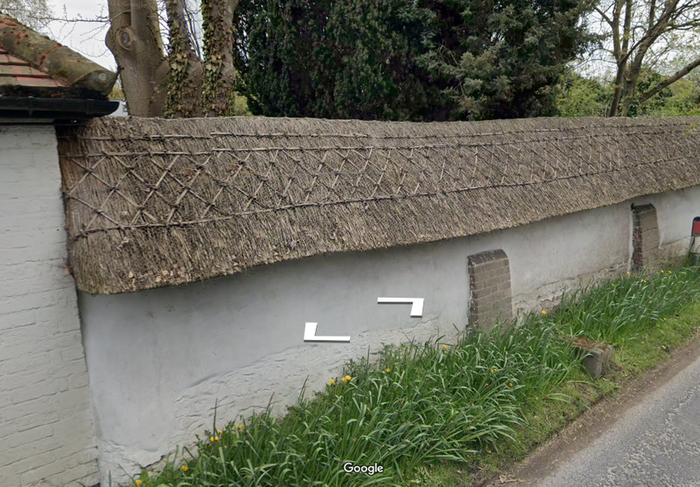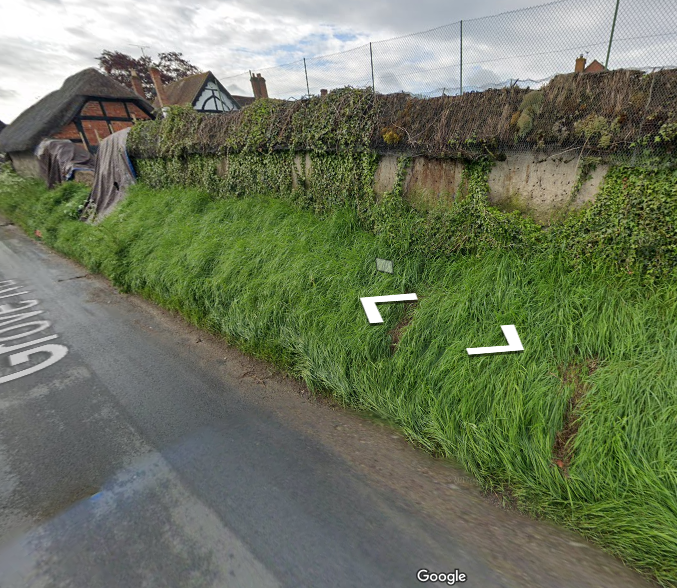Something I read here recently about cob walls needing a good hat and boots and lasting hundreds of years reminded me of where I grew up. In that part of Oxfordshire in the villages I passed on my way to school on the bus, there were several cob garden walls (lovely half timbered and thatched houses too). The soil is heavy alkaline clay with no stones, so brick or cob would have been the obvious indigenous building materials.
I thought I'd find some photos from street view to share for your amusement.
Here's one with a lovely new thatched top hat! You can also see the brick foundations and buttressing piers.

And here's one where the thatching obviously is in dire need of replacing. On the original street view you could see large holes, which are presumably ground nesting bees making use of the softened cob to make nests. Judging by the tarpaulin, someone has started making repairs which is nice since the wall is probably a few hundred years old. This village used to have the highest number of pubs per head of population, (it was on two main coaching routes) although most look closed now.

The two half timbered houses were both probably originally build with cobb or watttle and daub infill, although one has partially been replaced with brick.
Both photos taken from Google streetview.








